Memory Frequency Scaling on Intel's Skull Canyon NUC - An Investigation
by Ganesh T S on August 29, 2016 8:00 AM ESTGPU and Gaming Benchmarks
Our next focus is on GPU-centric workloads. The full benchmark numbers are presented below, but the overall performance trends are similar to what we observed in the CPU benchmarks section. Even the gaming benchmarks across all kits had similar results. That said, the OpenCL accelerated Agisoft Photoscan Benchmark does show major performance improvements (around 4.5% in moving from 2133 MHz to 2400 MHz, and, around 15% in moving from 2400 MHz to 3067 MHz) with increasing memory frequency. This shows that real-life workloads that can take advantage of the higher memory frequency SODIMMs do exist, but, they are just not that common.
Futuremark 3DMark 11 and 3DMark 2013
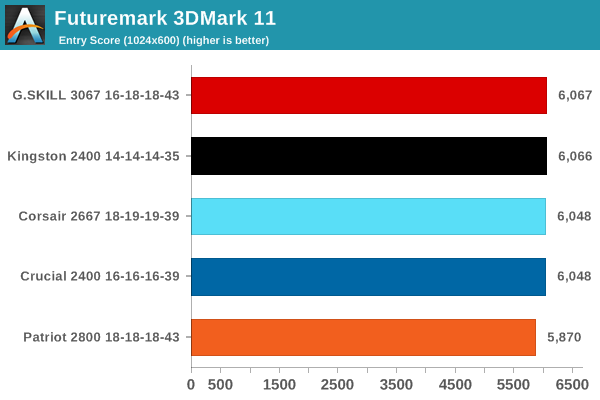
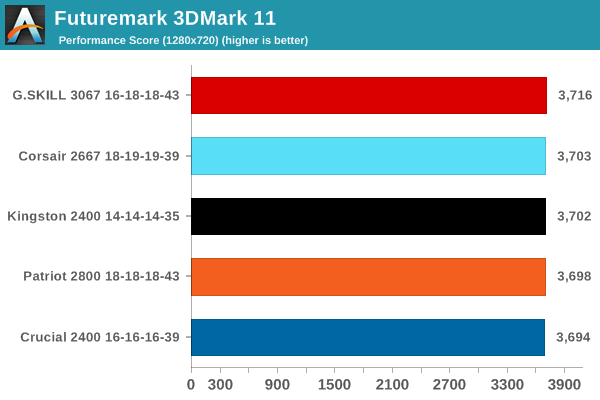

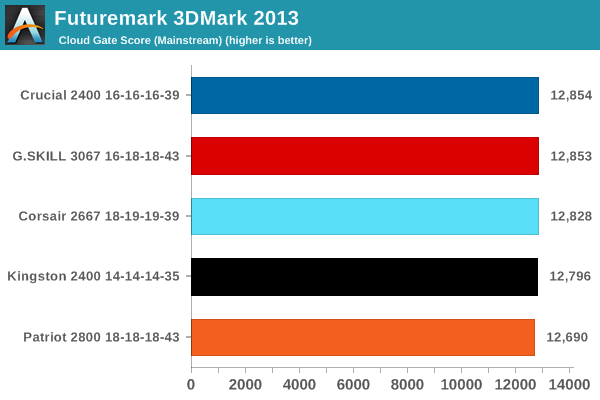
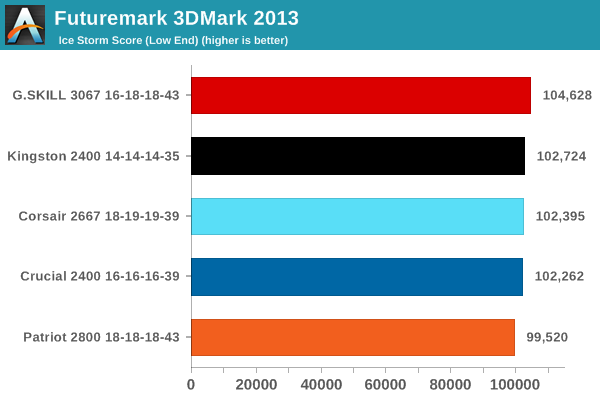
3D Rendering with OpenGL - CINEBENCH R15
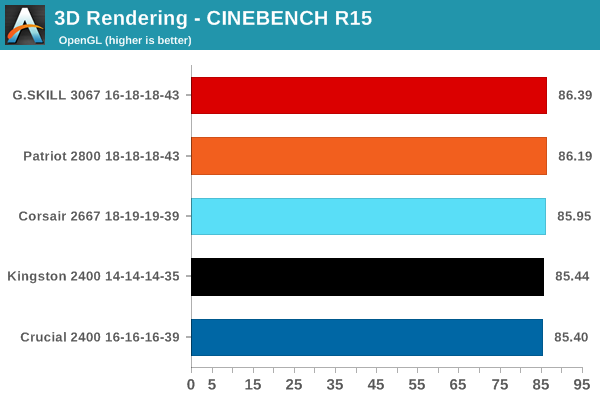
Agisoft Photoscan Benchmark with OpenCL Acceleration
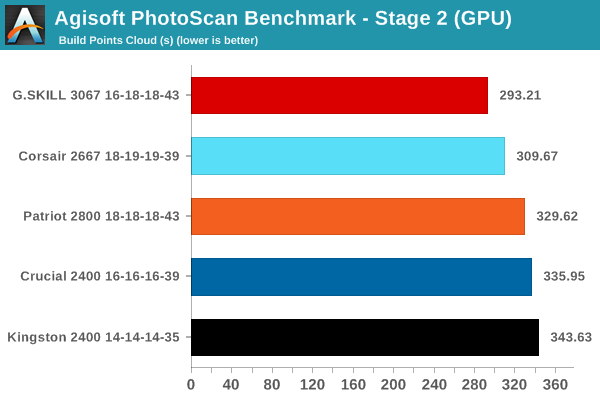
Gaming - Sleeping Dogs

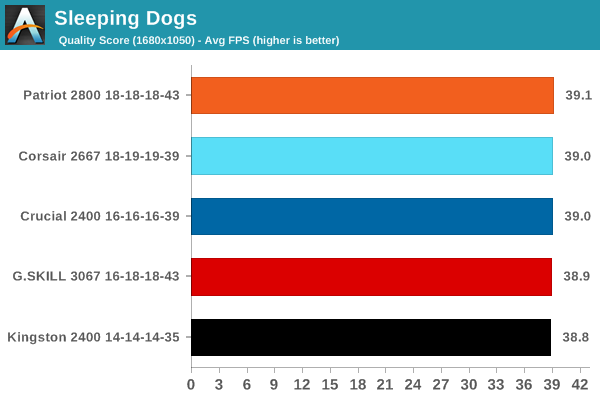
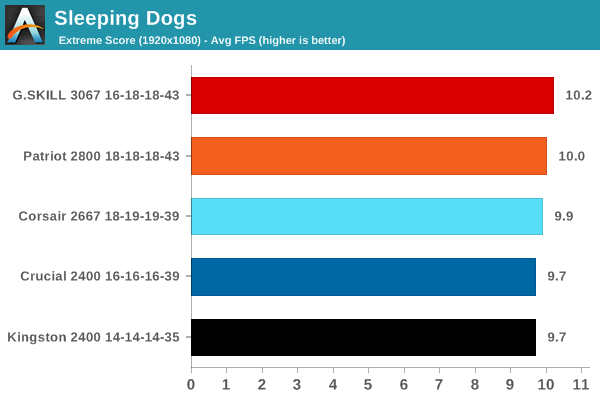
Gaming - Bioshock Infinite
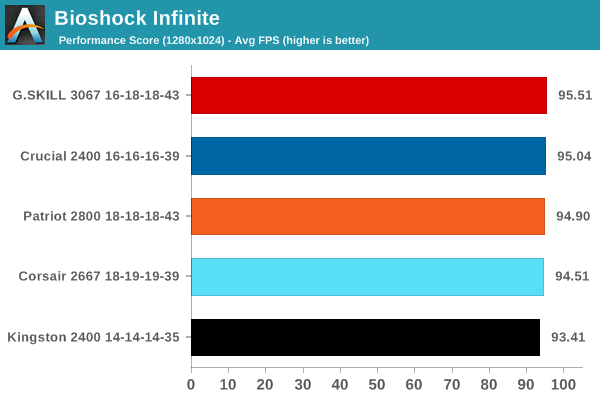

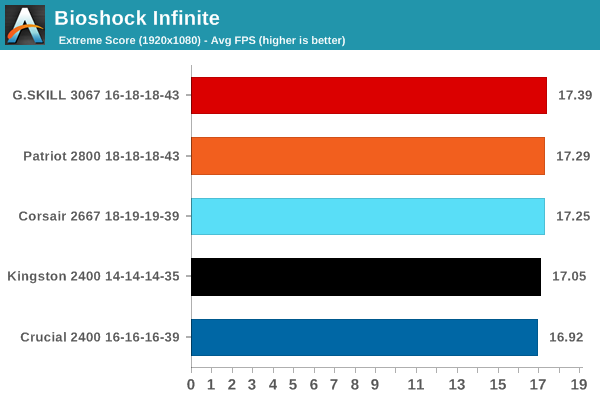
Gaming - Tomb Raider
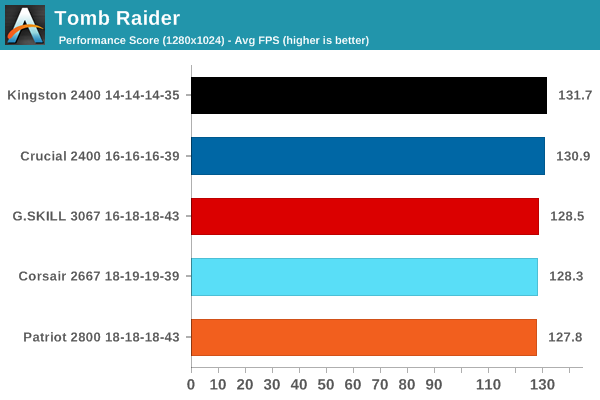
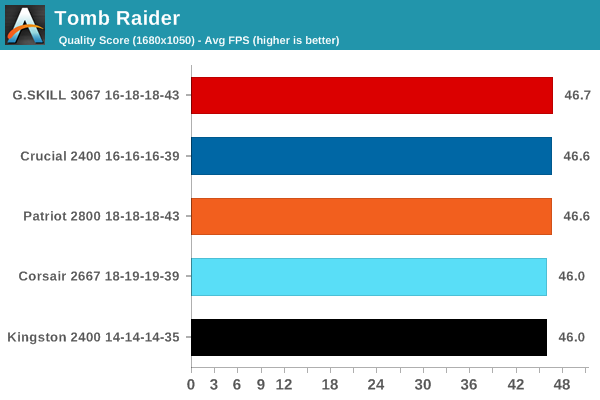
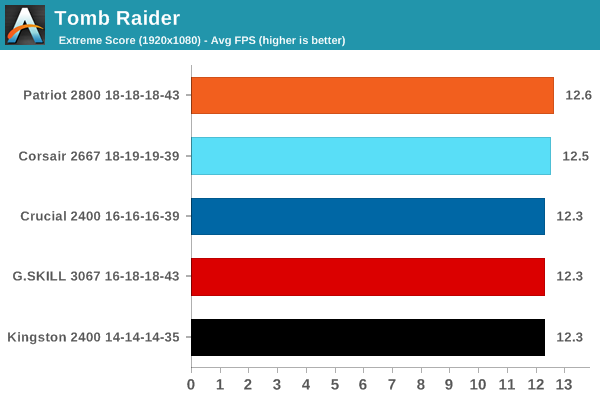
Gaming - DiRT Showdown
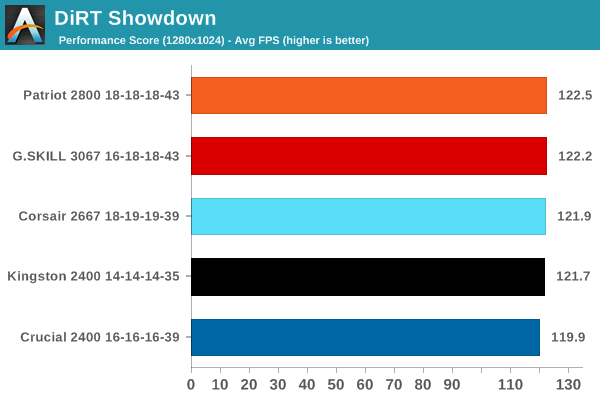
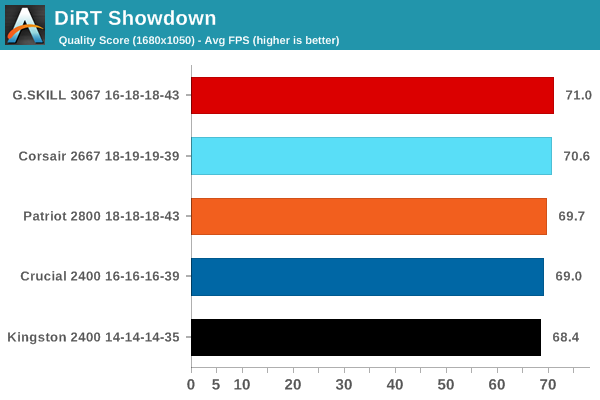

Gaming - GRID Autosport
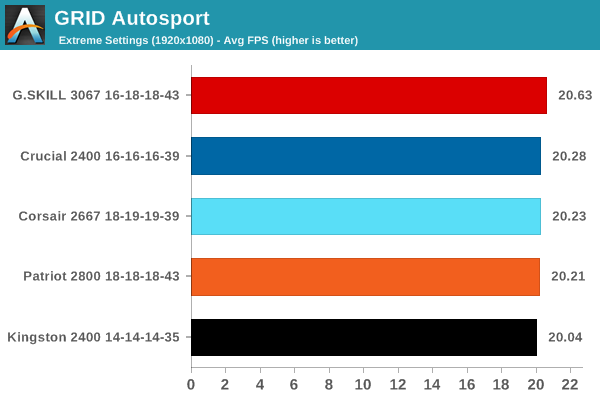
Gaming - The Talos Principle
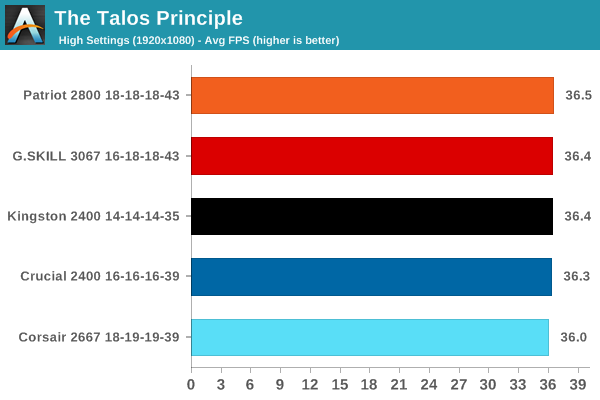
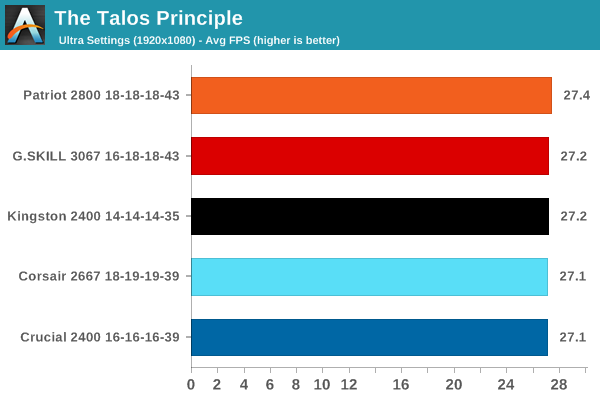










31 Comments
View All Comments
jjj - Monday, August 29, 2016 - link
The second graph on page 3 should be flipped upside down as lower latency is better and right now it is misleading if you aren't paying attention.snowmyr - Monday, August 29, 2016 - link
http://imgur.com/a/GxZWhYou're Welcome
kebo - Tuesday, August 30, 2016 - link
+1 internetsGigaplex - Monday, August 29, 2016 - link
"Upon booting into the BIOS after installation, I found that the memory was only configured to run at 2667 MHz. Altering the 'Automatic' DRAM timings to 'Manual' and 'user-defining' the various timing parameters as printed on the SODIMM label (16-18-18-43) enabled higher frequency operation."I'm not surprised. My G.Skill RAM (DDR3) also didn't perform as advertised in a plug and play fashion, and when I emailed to complain, they acted as if it was normal for manual entry to be required. So much for XMP compliance.
Ian Cutress - Monday, August 29, 2016 - link
The system BIOS automatically loads the SPD profile of the memory kit unless the XMP option is enabled. In most systems, XMP is disabled as the default option because kits without XMP (most of the base ones) don't exist. Also, the SPD profile is typically left as the base JEDEC settings to ensure full compatibility.If you want true plug and play of high speed memory kits, one of two things need to happen:
1) XMP is enabled by default (but not all memory will work)
2) Base SPD profiles on the memory should be the high-speed option (means the memory won't work in systems not geared for high performance)
There are a number of Kingston modules, typically DDR4-2400/2666, that will use option number (2). Some high-end motherboards have an onboard switch for (1). For everything else, it requires manually adjusting a setting in the BIOS.
The problem, as always, is maintaining wide compatibility. Just in case someone buys a high-end memory kit but wants to run it at base JEDEC specifications, because the hardware they are moving the kit into doesn't support the high frequency.
TheinsanegamerN - Monday, August 29, 2016 - link
dissapointing to see nearly no improvement in gaming benchmarks. You'd figure that a big iGPU would need more bandwidth with newer games.Perhaps current iGPUs just are not powerful enough. Maybe AMD will fix that with zen APUs next year.
Ian Cutress - Monday, August 29, 2016 - link
It's a function of the embedded DRAM. You would expect DRAM speed to affect the iGPU less when eDRAM is present because it provides a large 50GB/s bidirectional DRAM buffer. Without eDRAM, I would expect the differences in gaming results to be more. Will have to do testing to find out - this piece was focusing primarily on the Skull Canyon environment which lists high speed memory support as a benefit.Samus - Monday, August 29, 2016 - link
I haven't seen a memory frequency roundup like this since Sandy Bridge, which did show a slight benefit (more than Skylake for sure) moving from DDR3 1066 through 1333, 1600 and so on. Haswell I'm sure is a similar story. I had noticeable performance improvements on AM3+ platforms going from 1600 to 2400 especially in regard to the embedded GPU.With sky lake it seems you are just wasting your money to run potentially less reliable, more expensive memory out of specification. But I wonder if CPUs without the eDRAM have the same flat scale?
Ian Cutress - Monday, August 29, 2016 - link
Ivy Bridge: http://www.anandtech.com/show/6372/memory-performa...Haswell: http://www.anandtech.com/show/7364/memory-scaling-...
Samus - Monday, August 29, 2016 - link
Oh cool, thanks Ian! Should have figured you guys keep up with it.